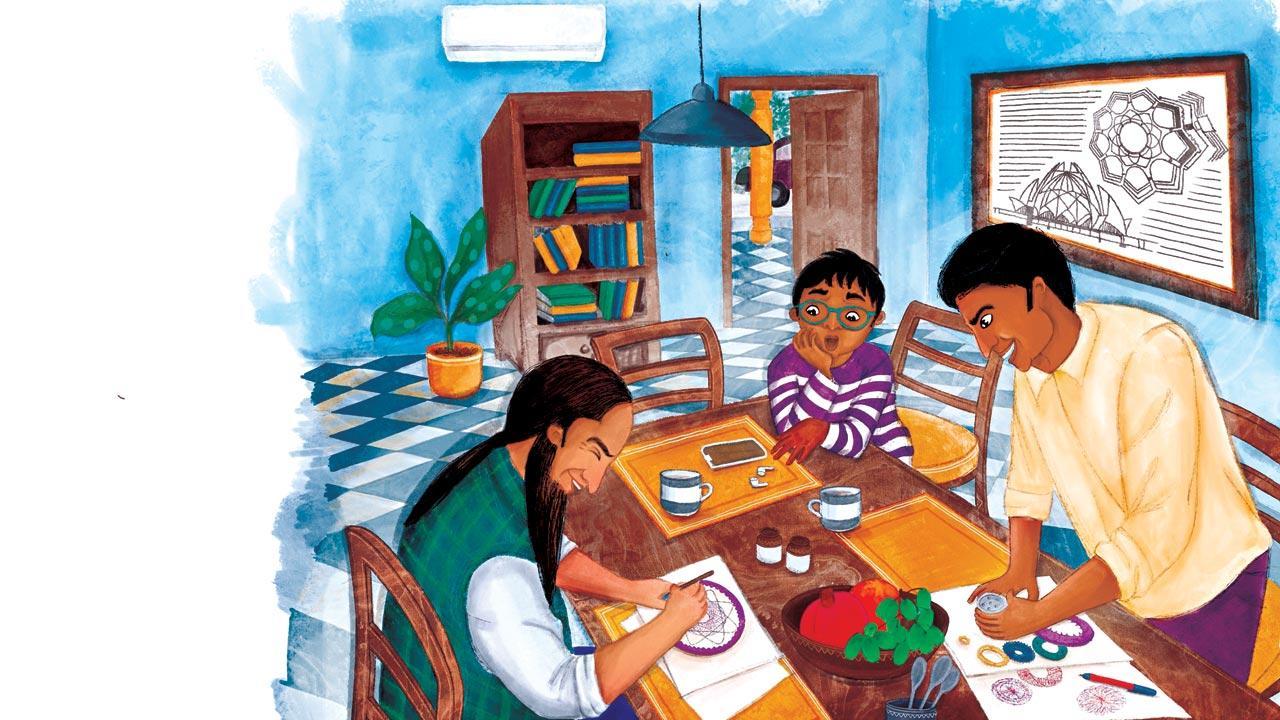A new children’s book puts forth ideas of faith and diverse beliefs for young readers through the eyes of a nine-year-old who joins his anthropologist father’s travels for a project

Shunya and his father meet Habib, an architect in Delhi, who follows the Baha’i faith. Illustrations Courtesy/Shruti Hemani, Harpercollins India
Faith is all around us. Human evolution and the evolution of faith have kind of happened simultaneously. There were a lot of things that ancient humans didn’t understand, and they tried to find answers through the stories they told themselves. Over a period of time, those stories became organised faith in a sense,” says author Nalini Ramachandran, whose latest children’s book, The Boy with a Hundred Questions (HarperCollins India), is rooted in the ideas of faith. Shunya, a nine-year-old boy, is on a quest to find answers to questions he’s curious about. This, he believes, is the only way he can stay connected with his thatha (Tamil for grandfather), a pious man who passed away before Shunya could have his curiosity satiated.
Like many ancient stories centred around myth and belief, Ramachandran employs the structure of a frame narrative. The main story, framing the other stories, is about Shunya’s anthropologist father who takes a trip around the world in search of his 11 doppelgangers for a personal project on human behaviour. Shunya accompanies him on his travels. Each meeting with a doppelganger turns into new lessons in faith for Shunya. For example, Koinet in Maasai Mara, Kenya, introduces him to the concept of animism followed by the tribes in the continent and narrates the story of a battle between the Black God (Enkai-Narok) and the Red God (Enkai-Na-Nyokie).
 A thunderous battle between the Black God and the Red God
A thunderous battle between the Black God and the Red God
“From a young age, children begin certain faith-related acts like offering flowers at the shrine, praying, bowing their heads, or covering their heads. But as they grow up, there is confusion about why they are made to do certain things. They may also wonder why their faith seems different from what people around them follow. The point of the book was to try and bridge these gaps and answer their questions,” shares Ramachandran. Sometimes parents too do not have all the answers, she acknowledges, or do not know how to answer. “In many cases, parents also discourage children from asking questions.” Through Shunya, Ramachandran conveyed that not only is it okay to ask questions, it is also important to do so.
She recalls experiences that her own questions led her to, in particular, discovering the Baha’i temple in Delhi. She also shares that some of these experiences became research material for her book. “Everything is research because of the nature of faith,” she tells us. For instance, while growing up in her native village, she would wake up and step out just to watch the musicians at temple chariots, the Kannadi Pallakku (mirrored palanquins). Further, her travels and conversations with friends who follow different belief systems, and books containing interesting stories helped her bring credibility to this endeavour. The 11 stories picked from different faiths make Ramachandran’s book a delight to read. Moreover, there is freshness in the articulation of the stories, most of which are not usually the first ones that readers stumble upon. In cases where they do happen to be, the books act as guides for parents who wish to pass them down but don’t know where to begin. Shruti Hemani’s illustrations that alternate between the two stories complement the text. They don’t crowd the book nor are they too sparsely placed; they depict the action in the stories just enough, leaving room for the imagination of readers.
 Nalini Ramachandran
Nalini Ramachandran
“Who we worship and how we worship — is it a physical entity like a statue or is it an environmental factor as in animism? These needed to be worked into the book to explain to the kids that there are different ways of worshipping and there are different gods,” she concludes.
Available Leading bookstores and e-bookstores
Cost Rs 499
 Subscribe today by clicking the link and stay updated with the latest news!" Click here!
Subscribe today by clicking the link and stay updated with the latest news!" Click here!










